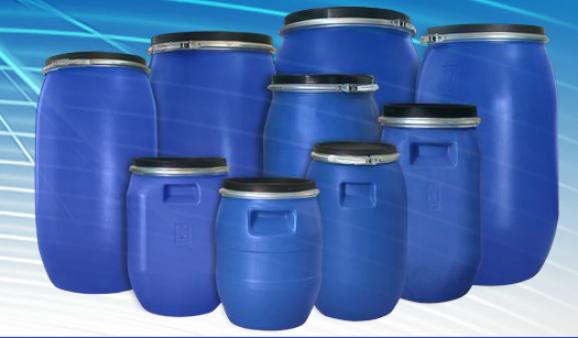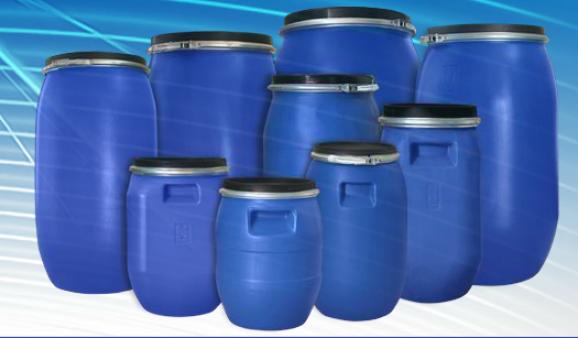

- TRANG CHỦ
- GIỚI THIỆU
- SẢN PHẨM
- Nguyên liệu ngành nhựa
- Hóa chất ngành Giấy
- Trợ bảo lưu và thoát nước
- Chất tăng bền ướt
- Chất phủ lô
- Hóa chất giặt chăn lưới
- Chất diệt khuẩn
- Tăng trắng huỳnh quang
- Lơ tím, xanh
- Trợ chống thấm bề mặt
- Phẩm màu cho giấy bao bì
- Phẩm màu cho giấy bìa màu
- Hóa chất cho giấy tráng phủ
- Chất phá bọt
- Chất tăng bền khô
- Hóa chất xử lý nước thải
- Chất phân tán Tissue
- Chất khử mực
- Hóa chất ngành sơn
- Nguyên liệu xi măng
- Hóa chất công nghiệp
- Hóa chất ngành dệt nhuộm
- TIN TỨC
- KỸ THUẬT
- KHÁCH HÀNG
- TUYỂN DỤNG
- LIÊN HỆ
DANH MỤC SẢN PHẨM
TÀI LIỆU KỸ THUẬT
- tdsp640j.pdf
- propertyanalysiswt45ancalpha.pdf
- tdspalmac1600alpha.pdf
- tdspalmac1500alpha.pdf
- stearicacid1838alpha.pdf
- coaofstearicacidr401860alpha.pdf
- deepwhiteabpxpowderalpha.pdf
- kymenẹ57htangbenuotvn.pdf
- prosofttq28881.pdf
- tdskymene705.pdf
- kymenẹ57htds.pdf
- hyt80tdsenalpha.pdf
- snowhite80tdsvietnam.pdf
- pmmacm207.pdf
- pc110uiso.pdf
- opticalbrighteningagent2plc.docx
- opticalbrighteningagent4plcvn.pdf
- melaminetdsalpha.pdf
- coazncl2alpha.jpg
- tdszncl2alpha.pdf
- pc1220ueng.pdf
- pc1100u.pdf
- pc1070ueng.pdf
- absag15átds.pdf
- ppk8009tdsen.pdf
- absterlurangp35.pdf
- absterlurangp22.pdf
- bakelit161jcoaalpha.pdf
- bakelit151jcoaalpha.pdf
- bakelit141jcoaalpha.pdf
- bakelit141coaalpha.pdf
- makrolonet3117isoen.pdf
- makrolonet3113isoen.pdf
- makrolonal2647isoen.pdf
- makrolon2807isoen.pdf
- makrolon2407isoen.pdf
- alphavncompanyprofile.pdf

- HÓA CHẤT NGÀNH GIẤY

- Trợ bảo lưu và thoát nước

Trợ bảo lưu Percol 540 dạng lỏng
| Tên sản phẩm: | Trợ bảo lưu Percol 540 dạng lỏng |
|---|---|
| Mã sản phẩm | Percol 540 |
| Nhóm sản phẩm: | Trợ bảo lưu và thoát nước |
| Lượt xem | 4905 |
| Mua hàng | |

Chemical nature
Polyacrylamide, cationic modified emulsified in: aliphatic hydrocarbons, water.
Technical data
Physical form white emulsion
Particle size < 1 μm
Bulk density ~ 1.03 g/cm3
Ionic charge cationic
App.- viscocity 500 – 3500 mPa·s
Solid content 43 - 46 %
pH-value 3 - 6
This information only indicates a typical property of the product and MUST NOT be taken as specification.
Storage
Percol 540 should be stored in tightly closed containers and a cool dry place in a temperature range of 5 – 35 °C and should be homogenized without high shear force before use.
Storage stability: See specification data sheet.
Special feature
Percol 540 is supplied as emulsion polymer with excellent solubility.
Polyacrylamide derivates like Percol 540 are the basis of state of the art single, dual, multi component, Hydrocol® and Telioform® retention systems.
Areas of application
Retention and drainage aid for the manufacture of all paper and board grades. Also applied as a polymer flocculant for enhancing the efficiency of paper machine saveall systems.
Recommended in single, dual and multi component, Hydrocol®, reverse Hydrocol, post screen Hydrocol and Telioform® microparticle retention systems.
In order to achieve best performance, it is recommended to use Percol 540 as part of an optimized BASF system in combination with Hydrocol®, Polymin®, Catiofast® and/or Telioform® products.
Benefits
Gives superior first pass retention of fines and mineral fillers in papermaking furnishes.
Enhances drainage for energy savings in sheet forming, pressing and drying.
Decreases white water solids to improve raw material yield and saveall efficiency.
Improves paper machine output and runnability for maximum return on investment.
Enhances wet-end colloidal retention leading to improved sizing and dye efficiency.
Provides stable wet-end conditions to improve sheet uniformity and paper properties.
Performs over a wide pH range.
Preparation of Primary Solution
To prepare a ready to use polymer solution it is recommended to use a suitable make-down equipment which provides a homogenous and lump free solution and a minimum holding time of 60 minutes.
Water for primary dilution
Ideally in a range of 15 – 35 ºC. Lower temperatures will require a longer stirring and mixing time. Higher temperatures will cause product hydrolysis and loss of efficiency.
Free of solids, free of color, free of transition metals and free of bleaching materials. High calcium hardness can accelerate the negative effects of other damaging materials or high temperature.
Storage of Primary Solution
After holding time the Primary Solution should be used as soon as possible and within 24 hours to avoid hydrolysis or bacterial/fungal growth and therefore a loss of effect.
Solutions with a pH of greater than 5 prepared with hard water are unstable, and their pH needs to be adjusted to 4 – 5 with sulphuric acid before they are stored for any length of time.
Preparation and Application
Designed for thin stock addition prior to sheet formation with a minimum of shear after dosage.
It is important to achieve a homogenized distribution of Percol 540 solution in the paper stock. This can be achieved by optimizing the speed differential between solution and stock or by choosing a suitable point of dosage.
BASF can provide recommendations for suitable preparation and metering solutions.
Usual addition rates
Retention systems: 0.01 – 0.2 % based on paper production tonnage
Recommended solution concentrations
Primary Solution: 0.5 – 1.0 % max.
Final Solution: 0.1 – 0.2 % max.
Preparation of Final Solution
To dilute the Primary Solution to final concentration suitable in-line mixing equipment such as a static mixing device or a mixing pump is recommended.
Water for final dilution
The quality of water used for final dilution is not as critical as that used for the Primary Solution preparation. The contact time should be limited and the flow should have sufficient velocity to maintain cleanliness in addition lines.
Warm water can be used.
Biocide treatment
All BASF flocculants are sterile as supplied, but polymer solutions can act as a growth medium for airborne and/or waterborne fungus/bacteria. Where this occurs, continuous addition of biocide is required. Only Isothiazoline based biocides are recommended, at an addition level of 1 – 2 ppm active on water volume. Any contaminated pipework should be replaced before the treatment is initiated.
Materials
According to our experience to date, stainless steel (AISI 316 Ti or AISI 321), polyester (Palatal® A 410), polyethylene (Lupolen®), polypropylene and rigid PVC can be used for tanks and pipework.
Sản phẩm khác cùng loại
- Hiện chưa có sản phẩm
HỖ TRỢ TRỰC TUYẾN
 Hotline: 0904 022 133
Hotline: 0904 022 133 Phòng KD hạt nhựa: 024.3776 7722/33, ext: 102; 103
Phòng KD hạt nhựa: 024.3776 7722/33, ext: 102; 103 Email: sales@alphachem.com.vn
Email: sales@alphachem.com.vn Phòng KD hóa chất: 024.3776 7722/33, ext: 104; 105
Phòng KD hóa chất: 024.3776 7722/33, ext: 104; 105 Email: sales@alphachem.com.vn
Email: sales@alphachem.com.vn Fax: +8424.37767744
Fax: +8424.37767744 Email:
Email:- Facebook Hóa Chất Alpha
-
 binh.alpha
binh.alpha
TÌM KIẾM NÂNG CAO
NHẬN TIN SẢN PHẨM MỚI
HOẠT ĐỘNG
- Thông báo nghỉ Tết Nguyên Đán Canh Tý 2019
- Tuyển Trưởng phòng kinh doanh hạt nhựa kỹ thuật - Business Manager
- Tuyển dụng Trưởng phòng kinh doanh/Nhân viên kinh doanh hóa chất, hạt nhựa
- Tuyển Nhân viên kinh doanh hóa chất
- Tuyển nhân viên kinh doanh hóa chất, hạt nhựa
- Thay đổi tên công ty và địa chỉ văn phòng
- Đoàn Hiệp hội Giấy Việt Nam tham dự FAPPI 31 tại Indonesia
- Công ty cổ phần giấy việt trì 50 năm xây dựng và phát triển
- Công ty CP giấy Việt Trì tự hào với truyền thống 50 năm xây dựng và phát triển
- Triển lãm China International Water Chem Exhibition 2013 lần thứ 9
LIÊN KẾT WEBSITE
- Công ty Cổ phần XNK Bắc Giang (Nhà máy Giấy Xương Giang)
- Công ty Cổ phần DEVYT (Nhà máy Giấy BBP)
- Công ty Cổ phần Giấy An Hòa
- Công ty Cổ phần Giấy Bao bì Đồng Tiến
- Công ty Giấy Tissue Sông Đuống
- Công ty TNHH Xưởng Giấy Chánh Dương
- Tập đoàn Giấy Tân Mai
- Công ty TNHH Giấy Trường Xuân
- Công ty TNHH Giấy Kraft Vina
- Công ty Giấy Hải Phòng
- Tổng công ty Giấy Việt Nam (Nhà máy Giấy Bãi Bằng)
- Công ty Cổ phần Giấy Việt Trì
- Trang Web Danh bạ các công ty hóa chất
- Công ty Cổ phần Giấy Sài Gòn
- Công ty cổ phần Sản xuất và thương mại P.P
- Công ty cổ phần Giấy Vạn Điểm
- Thời báo kinh tế - Diễn đàn Doanh Nghiệp Việt Nam
- Giấy – Wikipedia tiếng Việt
- Hiệp hội giấy và bột giấy Việt Nam (VPPA)
- Tin tuc 24h | tin nhanh bong da | the thao | thoi trang, giai tri vn
- Báo Dân trí – Thông tin mọi lúc, mọi nơi tới mọi người, mọi nhà
- Tin nhanh VnExpress - Đọc báo, tin tức online 24h
LƯỢT TRUY CẬP
- Đang xem
- Hôm nay 684
- Tổng lượt truy cập 4,009,486
THÔNG TIN TIỆN ÍCH
BÀI VIẾT MỚI NHẤT
- Tuyển dụng Trưởng phòng kinh doanh/Nhân viên kinh doanh Hóa chất, Hạt nhựa
- PAC và ứng dụng trong xử lý nước
- Cần tuyển nhân viên kinh doanh hóa chất, nhựa
- Tuyển 01 lái xe văn phòng
- Xử lý nước thải sản xuất giấy
- Lịch sử sản xuất giấy
- Các chất phụ gia trong ngành giấy
- List of Customers
- Nhựa thông trong kỹ thuật gia keo bề mặt cho giấy
- Nguyên nhân và cơ chế của hiện tượng bóc sợi
- Các bệnh giấy thường gặp và cách khắc phục
- Keo chống thấm AKD
- Chất độn cho giấy
- Nhuộm màu cho Giấy
- Khách hàng
- 6-8/6/2013: Triển lãm Quốc tế về ngành Giấy và Bột giấy Việt Nam
- Chất trợ bảo lưu Percol 182
- Tuyển 01 nhân viên kinh doanh hóa chất












Bình luận
Chưa có bình luận nào!
Phản hồi
Bình luận từ Facebook